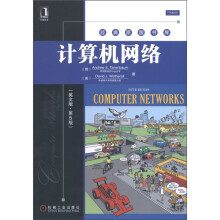PREFACE
ABOUT THE AUTHORS
1 INTRODUCTION
1.1 USES OF COMPUTER NETWORKS
1.1.1 Business Applications
1.1.2 Home Applications
1.1.3 Mobile Users
1.1.4 Social Issues
1.2 NETWORK HARDWARE
1.2.1 Personal Area Networks
1.2.2 Local Area Networks
1.2.3 Metropolitan Area Networks
1.2.4 Wide Area Networks
1.2.5 Internetworks
1.3 NETWORK SOFI'WARE
1.3.1 Protocol Hierarchies
1.3.2 Design Issues for the Layers
1.3.3 Connection-Oriented Versus Connectionless Service
1.3.4 Service Primitives
1.3.5 The Relationship of Services to Protocols
1.4 REFERENCE MODELS
1.4.1 The OSI Reference Model,
1.4.2 The TCP/IP Reference Model
1.4.3 The Model Used in This Book
1.4.4 A Comparison of the OSI and TCP/IP Reference Models
1.4.5 A Critique of the OSI Model and Protocols
1.4.6 A Critique of the TCP/IP Reference Model
1.5 EXAMPLE NETWORKS
1.5,1 The Internet
1.5.2 Third-Generation Mobile Phone Networks
1.5.3 Wireless LANs: 802.11
1.5.4 RFID and Sensor Networks
1.6 NETWORK STANDARDIZATION
1.6,1 Who's Who in the Telecommunications World
1.6.2 Who's Who in the International Standards World
1.6.3 Who's Who in the Internet Standards World
1.7 METRIC UNITS
1.8 OUTLINE OF THE REST OF THE BOOK
1.9 SUMMARY
2 THE PHYSICAL LAYER
2.1 THE THEORETICAL BASIS FOR DATA COMMUNICATION
2.1.1 Fourier Analysis
2.1.2 Bandwidth-Limited Signals
2.1.3 The Maximum Data Rate of a Channel
2.2 GUIDED TRANSMISSION MEDIA
2.2.1 Magnetic Media
2.2.2 Twisted Pairs
2,2.3 Coaxial Cable
2.2.4 Power Lines
2.2.5 Fiber Optics
2.3 WIRELESS TRANSMISSION
2.3.1 The Electromagnetic Spectrum
2.3.2 Radio Transmission
2.3.3 Microwave Transmission
2.3.4 Infrared Transmission
2.3.5 Light Transmission
……
3 THE DATA LINK LAYER
4 THE MEDIUM ACCESS CONTROL SUBLAYER
5 THE NETWORK LAYER
6 THE TRANSPORT LAYER
7 THE APPLICATION LAYER
8 NETWORK SECURITY
9 READING LIST AND BIBLIOGRAPHY









 缺书网
缺书网 扫码进群
扫码进群